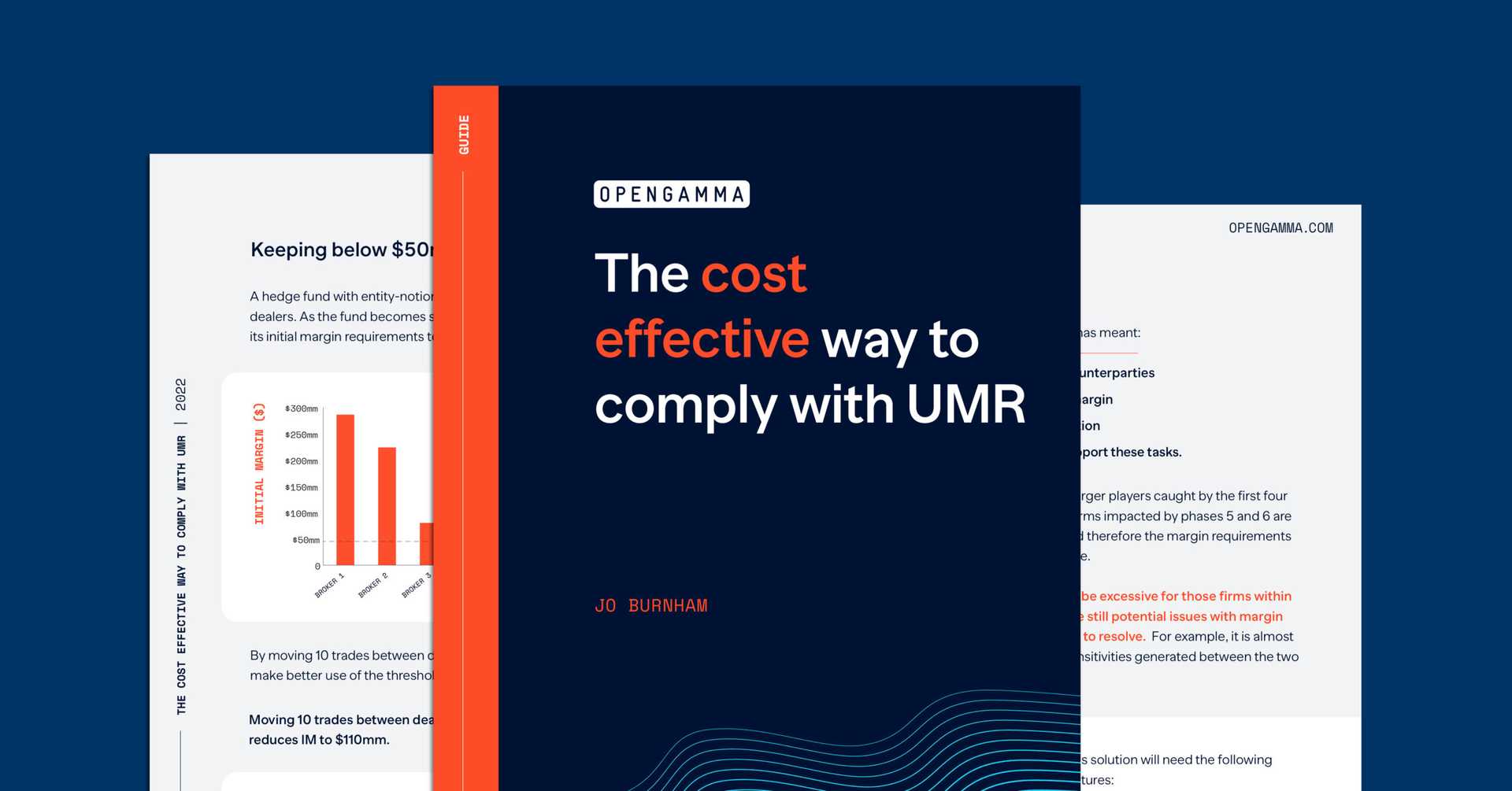UMR and The Impact On Margin Methodologies
The impact of UMR has been a hot topic of late.
Brokers will calculate margin using both their own models and the appropriate methodology depending on the product and market in question. They will then charge the maximum of the two numbers, to ensure that they are collecting the regulatory minimum. For anything that is in scope of UMR this will mean calculating a margin based on SIMM and comparing it with the requirement calculated using their ‘house’ model. The maximum is usually the SIMM number.
This has led Prime Brokers to look at their internal models, with many are considering aligning them with the regulatory model for simplicity. SIMM is a risk-based bilateral margin model and therefore provides a good foundation for a house model, expanding it to cover additional risk factors and products. A number of Prime Brokers have stated that they are looking to move to this style of model.
There are a couple of impacts of this. Firms may find themselves paying more margin as instead of SIMM being the higher number, the new house calculation could be the larger number as it is taking into account more risk factors. And for firms who are not impacted by UMR, they will need to understand SIMM if they are to be able to estimate their margin requirements under the new calculations.
Firms need to consider these changes in house models when looking at any potential solutions, particularly if they are currently considering what they need to implement to be ready for Phase 6. Many UMR specific solutions won’t cover the proprietary bank models. In addition they may only provide the end of day calculation needed to determine the amount of margin to be exchanged under UMR. But there are other use cases that should be looked at, for example margin attribution and intra day estimates of margin. Firms should ensure that they don’t end up in the same situation as many clearing firms have found themselves over the years, with a batch based end of day system that doesn’t provide them with the flexibility and analytics needed to support their business.




